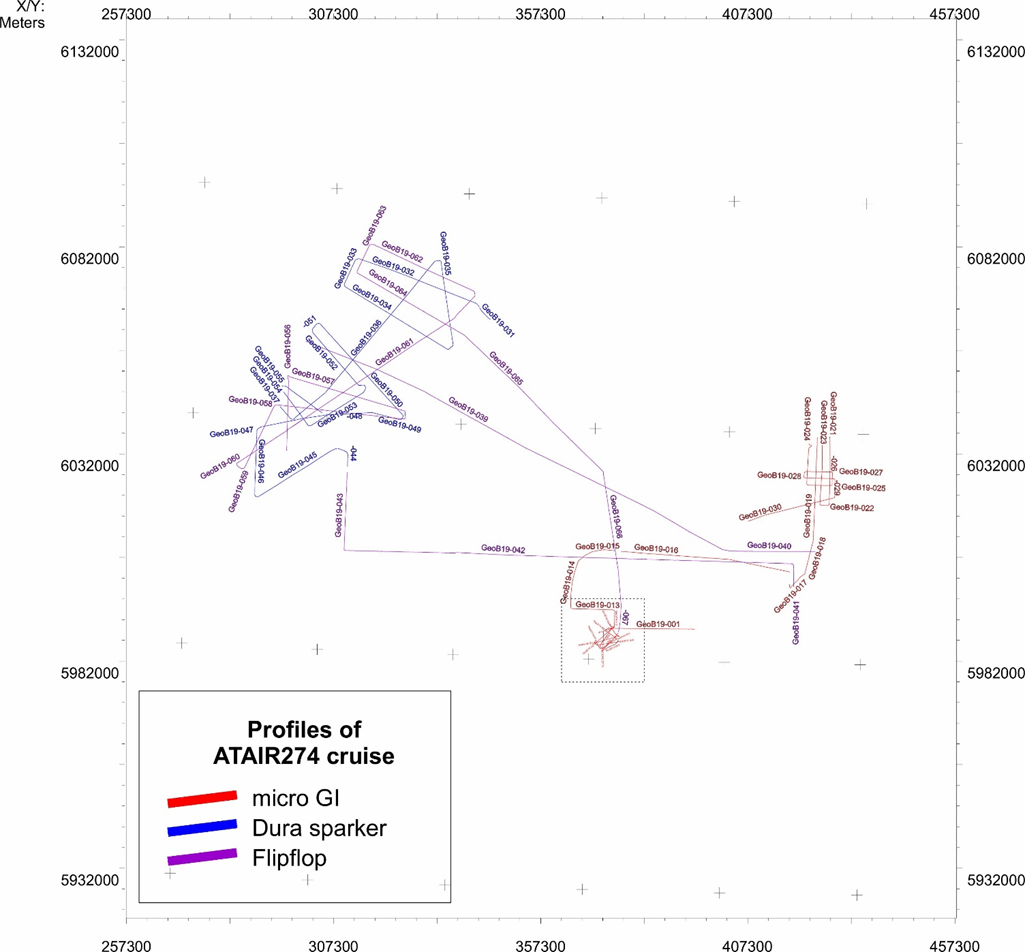2019 02 - VWFS Atair Cruise AT274
19.02.–28.02.2019 : Bremerhaven - Helgoland - Bremerhaven
Chief scientist: Marcel Ruhnau (BSH)
Chief Seismic: Dr. Bergmann / Dr. Steinmann
MTU Participants: Brune, Dodds, Gordeev, Meyer
Instrumentation:
- Sodera micro GI (Generator-Injector) Gun 2 x 0.1 L
- DuraSpark 400 (Fraunhofer IWES)
- Applied Acoustics single-channel streamer (BSH)
- Teledyne Streamer 220 m, 96 channels, single hydrophone groups
- Innomar SES 2000 light (Uni HH)
- calibrated OBH (BSH)
Funding for this cruise and related science is received through SEBAMO, the our joint research project with BSH, to gain a better understanding of geologic conditions in the German North Sea, with a focus on wind farm areas in the North Sea.
The German North Sea has been a location of extensive offshore wind farm construction for the last two decades. Turbine fields and individual sites need high-quality geophysical-geotechnical assessment down to 100 m sub-seafloor in order to ensure suitable foundation properties, to allow for the safety and stability of equipment. However, survey efforts are normally limited to single fields due to economic reasons. BSH, in cooperation with the University of Bremen, has set out to acquire a geological overview to sub-construction depths in order to allow a unified geological interpretation of different wind farm clusters, to set a standard for necessary pre-construction surveys, and to widen the understanding of North Sea evolution during the last three ice ages. To tackle these tasks, a series of cruises in an approximately annual rhythm are planned, during which various seismo-acoustic measurements will be carried out. The second cruise in the sequence was expedition Atair274, where an analogous multichannel surface streamer, a single-channel surface streamer, a micro GI air pulser, and a Dura sparker were utilized, together with an Innomar SES installed in the ship's moon pool.
The main targets of the cruise were to collect, on one hand, multi-frequency seismo-acoustic data in the windfarm areas N-3.7 and N9-12. On the other hand, connecting profiles were acquired to achieve a comparability of different areas, and overview lines acquired to tackle the effect of salt diapirism in the North Sea and its interplay with sedimentation and glaciation processes. A necessary crew change on Helgoland provided the opportunity for very long transit profiles in alternating source (Sparker + uGI gun) mode.
Data yield: 700 nm / >75 profiles of seismo-acoustic data.

